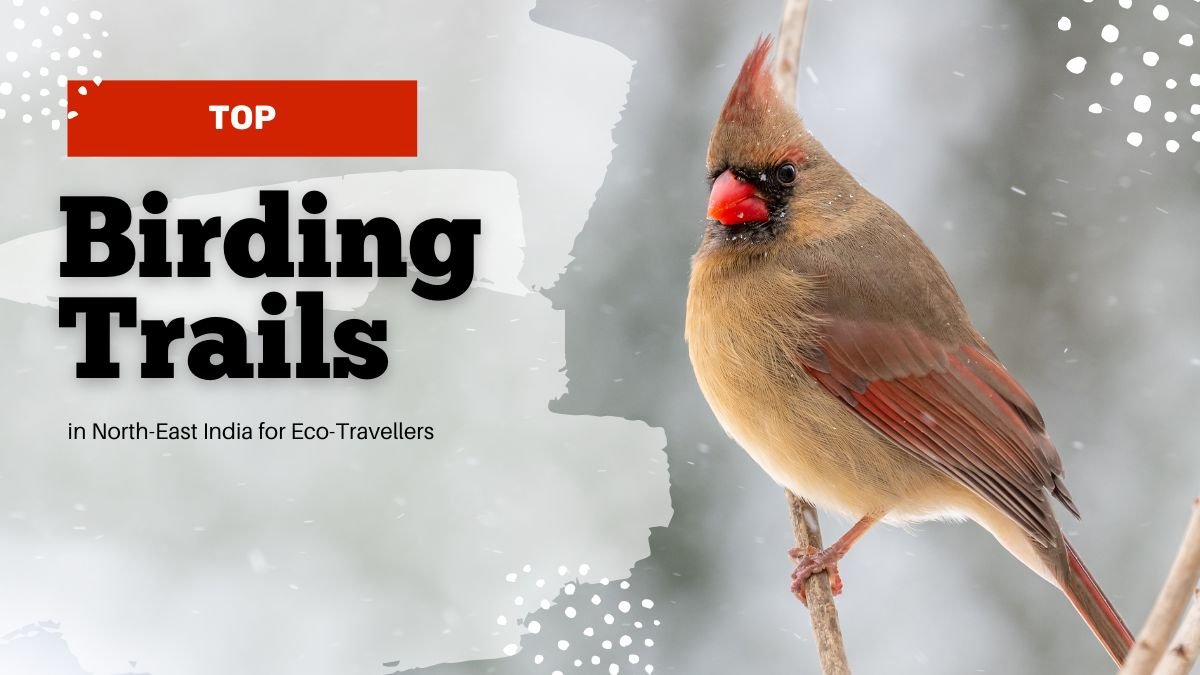Birding in North-East India-an incredible adventure to the world of wings.
A paradise for nature lovers and bird watchers, the North-East of India has deep beautiful forests. There are extraordinary mountains and different rivers framing an entirely different climate, but what is even more remarkable is the stunning diversity of the birds that this region has. Whether you are into birds or just an amateur, the North-East sets an experience that will last with you for the rest of your life.
In the forests and hilly areas, you will encounter rare birds not easily found in any other area of the world. The birding trails here are exciting and deeply connect you with nature as well.
What makes North-East India quintessential for birdwatching?
Biodiversity treasure:
North Eastern India lies in the eastern Himalayas, which is designated as the biodiversity hotspot. It is perhaps the richest for trees, plants, and animal species manifold as in most parts of the world.
Unique and rare birds:
Unique, rare birds: Hornbills, floricans, wood ducks, herons, etc., dot the landscape here. Many of these species are nowhere found anywhere in the world.
Unspoiled forests and serene trails:
This area stays a little away from its densest population, making trails here very calm and link one to a natural habitat.
Top birding spots in North-East India
- Eaglenest Wildlife Sanctuary (Arunachal Pradesh)This site is truly a haven for birdwatchers. More than 450 species have already made it to this sanctuary.Birds that frequent high altitudes like Temminck’s Tragopan can be seen here.Numerous migratory birds are also known to visit this place during winters.Walking on the trails passing through dense forests is a thrill in itself.
- Mishmi Hills (Arunachal Pradesh)It’s like a precious jewel for all nature lovers.This place is world-renowned for being the habitat of Bugun Liocichla, which is a very rare bird.In addition to that, there are other special distant hilly birds like the Sunbird and the Laughing Thrush.Cloud watching at short distance through the hills along with the sound of music by birds is a very special experience here.
- Nameri National Park (Assam)Settled between the river and the forest, this park is very famous for a lot of bird-loving people.The most famous here, among birds, is White-winged Wood Duck.Besides this, different types of Hornbills and Ibisbill can be spotted.Watching the birds through binoculars in this beautiful stretch of the white sand river sends the observer into a completely different world.
- Dibru-Saikhowa National Park (Assam)This region has forests and wetlands adjacent to the entire stretch of the Brahmaputra River.There are some rare species like the White-winged Wood Duck and the Falcated Duck.In winter, it looks most grandeur due to the arrival of all migratory birds.
- Kaziranga National Park (Assam)Indeed, Kaziranga is known for its rhinos and tigers, but bird watching here is equally commendable.Here you can see Greater Adjutant and Bengal Florican.Especially the dance of the Florican in the open grasslands is simply unforgettable.
- Manas National Park (Assam)The beautiful feature of Manas park is that it also connects with Bhutan.Trans-boundary park refers to parks that are shared by two nations, one of which is Bhutan.In this stunning location, many rare birds can be found, and during a river safari, it is thrilling to see a huge flock of birds.
- Meghalaya and NagalandThese two states have vast forests and mountains that are sought after by birdwatchers.The Khasi Hills of Meghalaya has lots of colorful and sweet-voiced birds.The dense forests of Nagaland are famous for migratory birds. The hornbill festival here is completely devoted to birds and culture.
- Dihing Patkai Wildlife Sanctuary (Assam)Africa is often referred to as the Amazon since rain-forests are associated with it.The magnificent birds Hooded Pitta and White-winged Duck are sighted here.Walking along this birding trail in the dense forests promises new surprises each and every step.
- Pangolakha Wildlife Sanctuary (Sikkim)This sanctuary is known for its altitude and weather changes.The altitude determines the kind of species that can be found here.The birds from here do alter height during the winter and the summer seasons, rendering bird watching more exceptional in experience.
Essential Tips for Eco Travellers
In case you are planning to visit Northeast for bird watching, you need to consider the following:
- Respect the Birds: Getting too close to them or being loud can scare them and make fly away and can quite often be harmful to their nests.
- Support Local People: Everywhere under the sun, make sure your stay is in eco-friendly lodges. That gives jobs to local people and keeps cultures alive.
- Do Not Litter: Follow the Leave No Trace principle-all traces will take the place out as it was.
- Choose Good Operators: Select guides and tour leaders who understand wildlife conservation.
- Sensitivity to sensitive areas: Do not approach nests or eggs or move branches.
- Educate Yourself: A person can collect information about the local birds and conservation measures. It adds to the pleasure of the trip.
Conclusion
North-east India is heaven for bird lovers. These mountains, forests, and rivers are not only beautiful but also have hundreds of rare birds. You may find a bird in the highest hills like Eaglenest or more Himalayan-like bird sanctuaries; it will go all the way down to the tip of the Indian Ocean at a high altitude. Be it on the hills among the clouds of Mishmi Hills or on the plains of Kaziranga – everywhere, a different world of birds will be found.
The birding trails of the North-East are worth taking if:
- You can really connect with nature and experience that part of India which is unflattering to the normal tourist.
- You need to do some serious heart-soothing and maybe understand the need for protection of nature.















